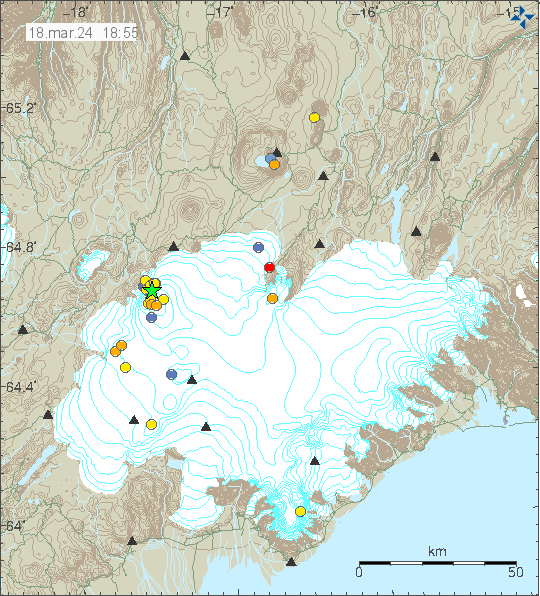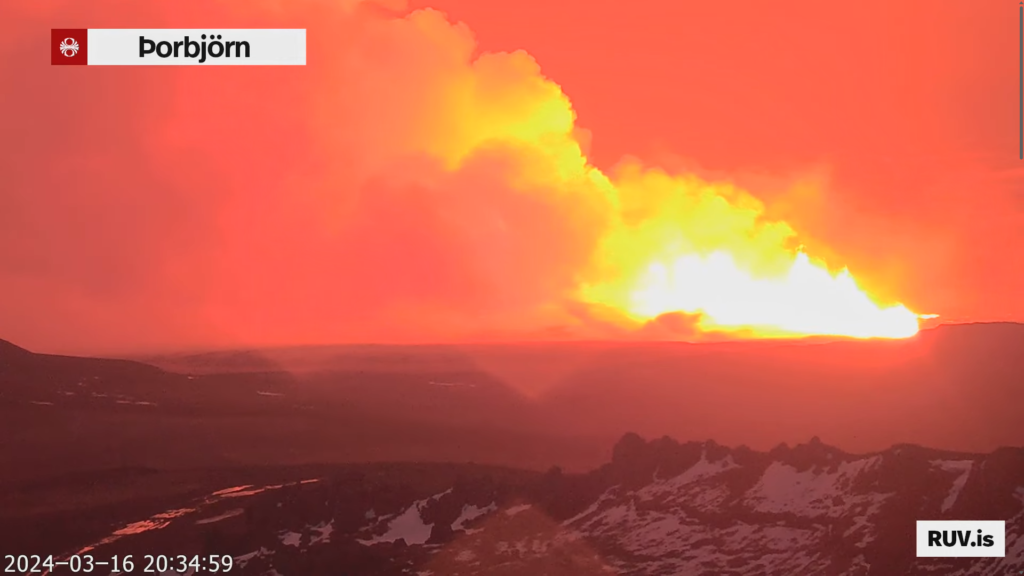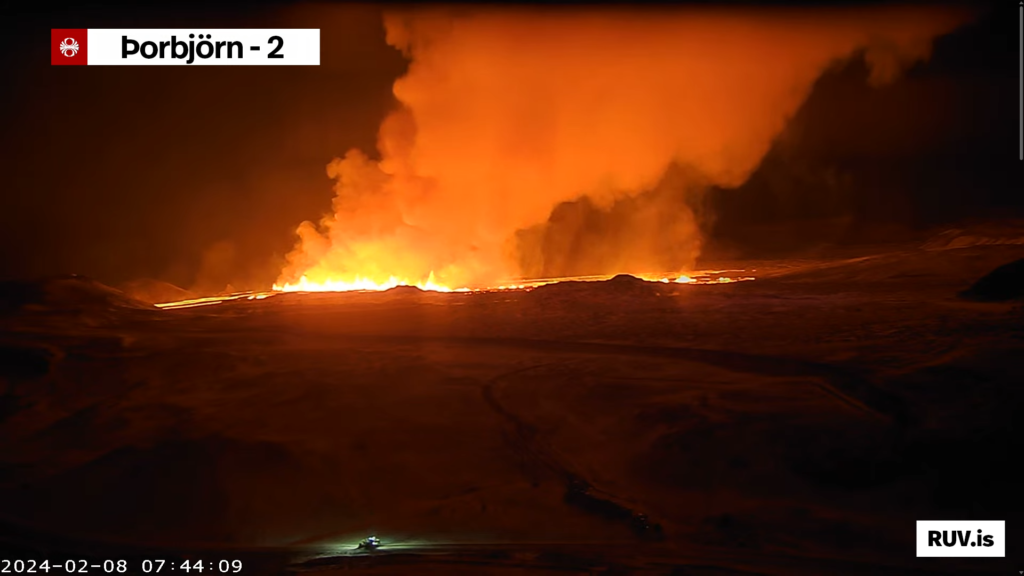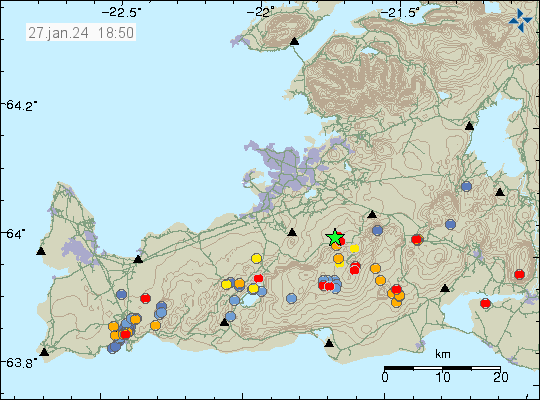This is a short update since there has not been a lot of change in the last twenty four hours.
The eruption is stable at the writing of this article. This might change without warning.
- Harmonic tremor has been stable in the last 24 hours. With almost no fluctuation.
- GPS stations around Svartsengi volcano show a deflation around 200 to 300mm at the writing of this article. There’s uncertainty in this data because of bad weather in Iceland.
- The lava from this eruption has reached 5,85 km2 according to Icelandic Met Office.
- There is little to no earthquake activity in this area, but measurements might be blocked by bad weather.
- Crater build up continues in this eruption.
- The lava is around 350 meters from Suðurstrandarvegi and around 700 meters from reaching out in the ocean.
If there is a change in the eruption. I’ll write about it quickly as I can. Next article should be by 21. March 2024 if the eruption is still ongoing by that date.







